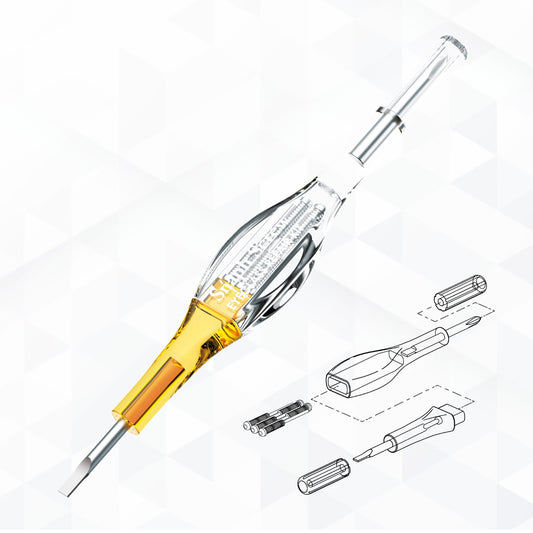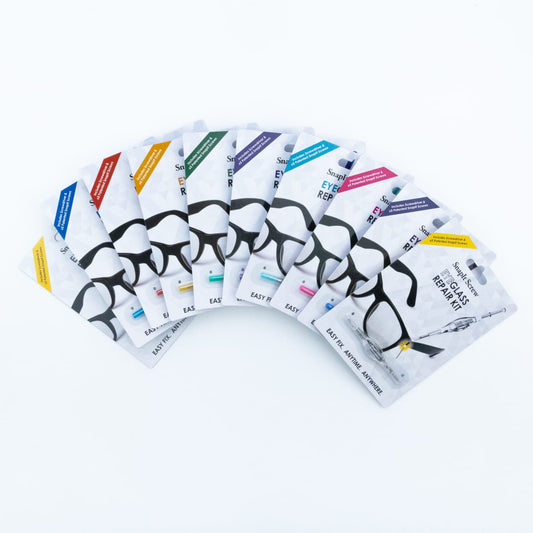Choosing the right frame size is crucial for comfort, style, and optimal vision. Whether you are buying glasses online or in-store, understanding your glasses measurements ensures a perfect fit. This guide will teach you how to measure eyeglasses accurately, find the perfect fit, and select a pair of glasses that complements your face shape.
How to Find the Perfect Fit for Your Glasses?
Finding the perfect pair of glasses isn’t just about style; it’s about ensuring a well-fitting pair of glasses that sits comfortably and enhances your vision. Glasses that are too tight can cause discomfort, while loose frames might slide down your nose. Knowing your frame size helps you find the perfect fit for prescription glasses, sunglasses, and other types of glasses.
Why Frame Size Matters for Comfort and Style?
Choosing the right frame isn’t only about aesthetics. Frame size affects how comfortably your glasses fit, how well they align with your eyes, and how they balance on your bridge of your nose. A pair of glasses that’s too wide can distort your vision, while glasses that are too small might pinch and cause discomfort. The right frame width ensures your glasses fit properly and sit comfortably over your ears.
Understanding Frame Dimensions: What Do the Numbers Mean?
Most glasses have three key numbers printed on the temple arm:
- Lens width – the horizontal width of each lens.
- Bridge width – the distance between your lenses.
- Temple length – the length from the hinge to the tip of the temple arm.
These frame measurements are essential when selecting the right frame size to ensure your glasses fit properly.

How to Measure Eyeglasses for a Perfect Fit
To measure frame size, you need a ruler or caliper to take precise measurements:
- Measure frame width horizontally across the front of your frames.
- Measure the bridge width, which usually ranges from 14 mm to 24 mm.
- Measure the lens height vertically at its tallest point.
- Measure the temple length, which typically falls between 120 mm to 150 mm.
Lens Width and Lens Height: How They Affect Your Vision
The lens width determines how wide each lens is, which affects your peripheral vision. Larger lenses might provide a wider field of view, while smaller lenses can limit vision. The lens height, measured vertically at its tallest point, is crucial for progressive lenses and bifocals.
Bridge Width: Finding the Right Fit for Your Nose
The bridge width is measured at its widest point between the two lenses. This affects how the frames sit on your nose. If the bridge is too wide, your glasses might slide down; if it’s too narrow, it could pinch. The bridge width usually falls between 14 mm to 24 mm.
Temple Arm Length: Ensuring Your Glasses Fit Comfortably
The temple arm length is the measurement from the hinge to the tip of the arm. If the temple length is too short, the frames won’t sit comfortably over your ears. If it’s too long, the glasses might extend beyond the back of your head.
Measuring Your Face Shape to Find Frames That Suit You
Your face shape plays a role in finding the right frame size.
- Round faces: Opt for angular frames to add definition.
- Square faces: Choose rounded frames to soften features.
- Oval faces: Most frames fit well.
- Heart-shaped faces: Look for frames slightly wider than your face.
Common Mistakes When Choosing the Right Frame Size
- Ignoring the size guide - always check the glasses measurements before ordering.
- Overlooking the temple length - a proper temple length ensures the glasses sit comfortably.
- Choosing frames that are too tight or too loose - frames shouldn’t sit too close to your eyes or slide off.
By following these steps, you can find the perfect glasses for your needs and avoid common sizing mistakes when choosing the right frame.
 and
and  WHEN BUY 3 KITS
WHEN BUY 3 KITS







